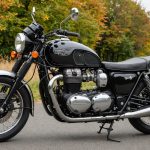You’ve probably been there, cruising down a foggy road on your Yamaha Tracer 900, squinting to make out the obscure shapes ahead, and wishing you had better lighting. Upgrading your motorcycle with aftermarket fog lights can significantly enhance your visibility and safety during unfavorable weather conditions. But how do you go about the installation process? We have put together this comprehensive guide to help you install aftermarket fog lights on your Yamaha Tracer 900, with a special focus on the Givi LED auxiliary light model.
Choosing the Right Aftermarket Fog Lights
Before you get to the installation, it’s crucial to choose the right aftermarket fog lights for your Yamaha Tracer 900. The market is flooded with different brands and designs, but one product that has consistently received positive reviews is the Givi LED auxiliary light.
Also read : How can I improve fuel efficiency on my Triumph Bonneville T120 during long-distance tours?
Givi is a well-known brand in the motorcycle accessories market, renowned for offering high-quality products. Their LED auxiliary light kit provides impressive brightness and durability, ensuring improved visibility on foggy roads.
The Givi LED lights are specifically designed to be compatible with a range of Yamaha models. They are compact and lightweight, causing minimal impact on the bike’s aerodynamics. The LED technology ensures the lights are energy-efficient, so they don’t strain your bike’s electrical system.
Topic to read : What are the correct settings for adjusting the ABS on a Suzuki GSX-R1000?
In order to ensure a good fit, you will need to order the correct model for your Yamaha Tracer 900. Also, consider purchasing a specific mounting kit for the lights. This will include all the necessary brackets and screws for a secure fit.
Preparing for Installation
Once you’ve purchased your Givi LED auxiliary lights and mounting kit, you need to prepare for the install. This process involves familiarizing yourself with your Yamaha Tracer’s lighting system and identifying the best location for your new lights.
Usually, the best place to mount auxiliary lights is on the engine guard. This provides a good balance between visibility and protection for the lights. Be sure you have a sturdy engine guard that can support the weight of the lights.
Before you start, gather all your tools. The exact tools needed may vary based on your bike model and the light kit, but you will typically need a set of wrenches, a screwdriver, and possibly a drill if you need to create new mounting points.
The Installation Process
Now that you have your tools and lights ready, you can begin the installation process. Although installing auxiliary lights might seem daunting at first, a methodical approach will make the process manageable.
Begin by attaching the mounting brackets to your engine guard. Make sure they are securely fastened and provide a stable point for the lights. Once the brackets are in place, you can attach the lights. Ensure that the lights are tightly secured to the brackets, but don’t over-tighten as this could damage the lights or brackets.
Next, connect the lights to your bike’s electrical system. This will usually involve joining the light’s wiring harness to the bike’s existing wiring. Make sure you follow the manufacturer’s instructions to avoid any electrical issues.
Aligning and Testing the Lights
Once your new fog lights are installed, it’s time to align them correctly. The goal here is to ensure the lights improve your visibility without blinding oncoming drivers. You can adjust the angle of the lights using the adjustment screws on the bracket.
After aligning the lights, test them to ensure they are working correctly. Start your motorcycle and activate the lights. They should light up brightly and consistently. Also, monitor your motorcycle’s performance for any signs of electrical strain.
Maintenance and Troubleshooting
After successfully installing the fog lights on your Yamaha Tracer 900, regular maintenance is necessary to ensure they continue to function effectively. This includes cleaning the lights regularly to prevent dirt build-up that can diminish their brightness. Furthermore, check the alignment of the lights regularly and adjust if necessary.
In case of any issues with your lights, refer back to the installation manual. Most common problems can be resolved with some basic troubleshooting. However, if the problem persists, it might be necessary to seek professional help.
In conclusion, installing aftermarket fog lights on your Yamaha Tracer 900 can significantly improve your visibility and safety during foggy conditions. By choosing the right product, preparing adequately, and following the correct installation process, you can ensure that your new lights perform optimally.
Aftercare and Protection of your Fog Lights
Once you have installed the fog lights on your Yamaha Tracer 900, it’s essential to ensure they are well protected and maintained. The durability and performance of your fog lights rely heavily on how you take care of them post-installation.
Bike Protection Accessories: To provide an additional layer of protection to your fog lights, consider installing bike protection accessories such as crash bars. Crash bars, also known as engine guards, are designed to protect the engine and other vital parts of the motorcycle, including your fog lights, in the event of a collision or a drop. They also serve as suitable mounting points for your fog lights.
Regular Cleaning: Routine cleaning of your fog lights should not be overlooked. Dirt and debris accumulated on the surface of the lights can significantly impact their brightness. Use a soft cloth to wipe off any dust or grime. For tougher stains, using a mild detergent is advisable.
Periodic Inspection: Regular inspection of your fog lights is crucial to ensure they remain in optimal working condition. Check for any loose connections or fittings that may have occurred due to vibrations while riding. A loose fitting can be easily tightened with a wrench.
Light Bulb Replacement: Eventually, the LED light in your fog light will burn out and need replacement. It’s recommended to replace your light bulbs as soon as you notice a decrease in brightness. Always choose high-quality LED light bulbs for replacement to ensure longevity and optimal performance.
Conclusion: Enhancing Road Safety with Fog Lights
Riding a Yamaha Tracer 900 through foggy conditions can be a real challenge. However, with the correct installation of aftermarket fog lights, you’ll significantly improve your visibility, enhancing your safety on the road.
Choosing a reliable brand like Givi for your LED auxiliary lights is half the job done. The Givi LED lights offer a desirable blend of brightness, energy efficiency, and compatibility with your Yamaha Tracer 900. A specific fitting kit can provide an additional ease of installation.
Preparing for the installation process involves gaining a deeper understanding of your bike’s lighting system and finding the perfect spot for your new lights. The installation itself is a systematic process that, when done correctly, promises excellent results.
Remember, the care you provide post-installation plays a significant role in the longevity of your fog lights. Regular cleaning, periodic inspections, and timely bulb replacements can extend the life of your lights.
In conclusion, aftermarket fog lights are an invaluable addition to your Yamaha Tracer 900. They not only improve your visibility during unfavorable weather conditions but also enhance the overall aesthetic of your bike. So, invest in a good pair of fog lights today and enjoy safer and enjoyable rides, even in the densest fog!










